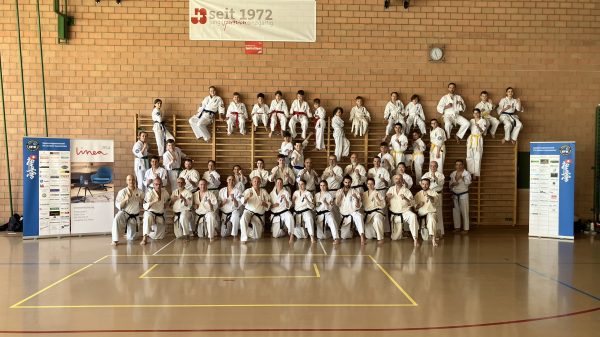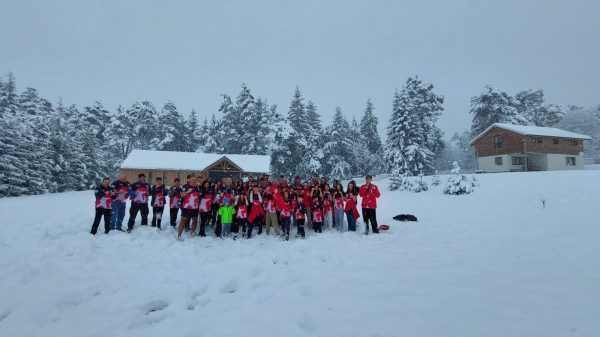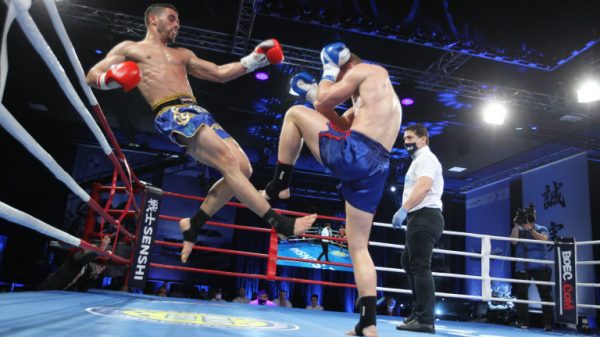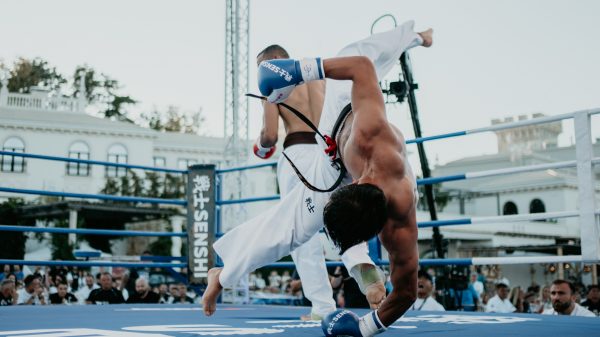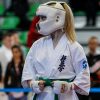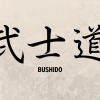The word Sensei has been translated from Japanese to mean a number of things:
teacher, instructor, master. The translation that best fits the ideal role of Sensei in the traditional and martial arts of Japan is “one who has gone before.” As martial arts, in the Japanese sense, are a way or a path through life, the sensei is the one who has tread the path of the warrior before the students behind him, and can thus point the way forwards.

The ability to point the way forwards is, in my opinion, what is missed by most who would call themselves sensei: the position of sensei is not one of instructorship, there are other titles for that position, but one intended to demonstrate and guide students forwards down the martial path. The is, here, a subtle difference between instructing a person and guiding a person, and that is the crux of what it means to be sensei in a dojo.
To guide a person down the martial path means to correct their missteps without actively determining the way in which they should be walking down the path. Sensei should, ideally, demonstrate the proper technique upon or with the highest ranked sempai in the class, slowly, so that the kohai may see clearly the way in which technique is performed. After demonstration, Sensei should remain uninvolved in the actual training, intervening only to correct problems. It is the role of the Sempai/Kohai relationship to foster the actual working of technique.
This, then, may seem backwards from what is expected of a Sensei in a dojo: this is not to advocate that Sensei does not explain to the best of his ability how to execute technique. Rather, in guiding students along the martial path, sensei should clearly demonstrate how to take those first steps through clear and concise demonstration of technique at the beginning of class. For example, in Kenjutsu, it is not uncommon to find sensei not leading the class through basic suburi, rather, that role is left to sempai after sensei has established the rhythm and technique. Sensei then moves around the dojo, ensuring that students retain the proper form and body position, only stopping the exercise when necessary to give a general explanation.
During paired practice, sensei’s vision is all the more important: as paired technique will vary from person to person, it is important that sensei remain vigilant for mistakes and confusion as the students move through the techniques. If sensei involves himself with training with one of his other students, he may miss critical errors in student technique which will complicate their training forwards. As the one who has gone before, it is the responsibility of sensei to ensure that each student is placing one foot after another on the martial path.
Sensei, then, should lead by example, instruct by example, and only provide detailed explication of technique when absolutely necessary to correct form. Too often are new or young sensei sucked into the trap of verbally explaining what can be demonstrated more easily or felt by the student if guided by sensei. This concept is derived from a Zen Buddhist thought that words and forms cannot contain the essence of Zen: it is something that must be felt. So, too, is it with the martial arts: if a student is communicated technique verbally, it may be more difficult for them to understand what they are supposed to be attempting. However, if sensei allows them to feel correct technique, their body and mind will recall the sensation and seek to duplicate that sensation with each attack.
However, leading by example has its perils: if sensei provides poor or too fast demonstration of technique, his kohai will attempt to follow in his footsteps, ultimately leading to poor or rushed application of technique. For good instruction to take place, instruction must be slow enough for the students to understand the actions taking place, clear enough that there is no confusion about the motions, and dynamic enough to hold the attention of the students. In demonstrating technique, sensei should seek to communicate to his students the important of each element, so that even the senior Sempai will have something to gain from the demonstration.
The technique that sensei engages in will reflect the technique that kohai and sempai perform. A poor sensei will generate poor students, except in rare occasions that a genuinely brilliant student arises. The techniques of the students are reflective of both the technique of sensei and the way in which sensei instructs: sensei’s errors will be magnified by his students. In this way sensei should use his students as a mirror to the true form of his technique: if his students make an error, he should examine his own technique for that error and resolve it. Taking the students in this way, the sensei improves his own training through observation and teaching of his students.
Finally, as sensei is “the one who has gone before,” it is incumbent upon Sensei to remember that he, too, once walked the path that his students have walked. The sensei who forgets that he is still a student on the martial way is the sensei who has forgotten himself. The primary lesson to be taken from becoming a sensei and improving technique is that sensei is always a student: the way of the warrior is under constant refinement, constant scrutiny. There is always something to be learned even when one transcends technique and manages to grasp Ueshiba’s Way of Peace, Obata’s Katsujinken, or Funakoshi’s “no-technique.”
If sensei takes his training to be the pinnacle of martial training, his arrogance will be communicated to his sempai and kohai. the dojo’s atmosphere will be tarnished by the projection that sensei is the ultimate arbiter of good technique, and training stops at his level. This is, of course, untrue, however, students will take in sensei’s attitude just as they will take in sensei’s technique and reflect it back upon him. You can see the students guided by sensei who are arrogant, overconfident in their technique: they proclaim their superiority over other arts, seek to impose their order upon other martial ways. This is not the way of the martial arts, and this is not the way in which a sensei should instruct his students.
Sensei, as the guide down the martial path, should always be cognizant of his words, his actions, and his behavior in the dojo. To foster the kind of growth that sensei would like to see in his students, sensei must first foster it in himself, otherwise the students will have no one to look to who has walked the path before them.
http://japaneseweapons.org/


